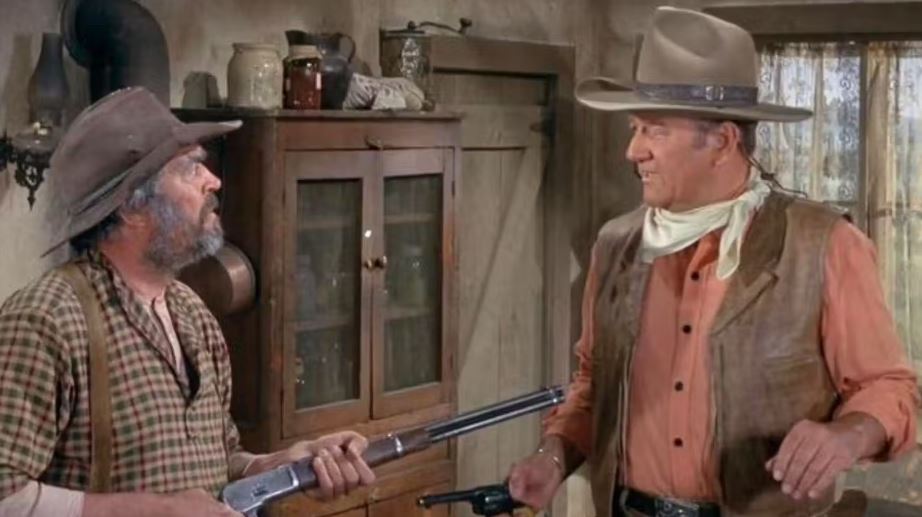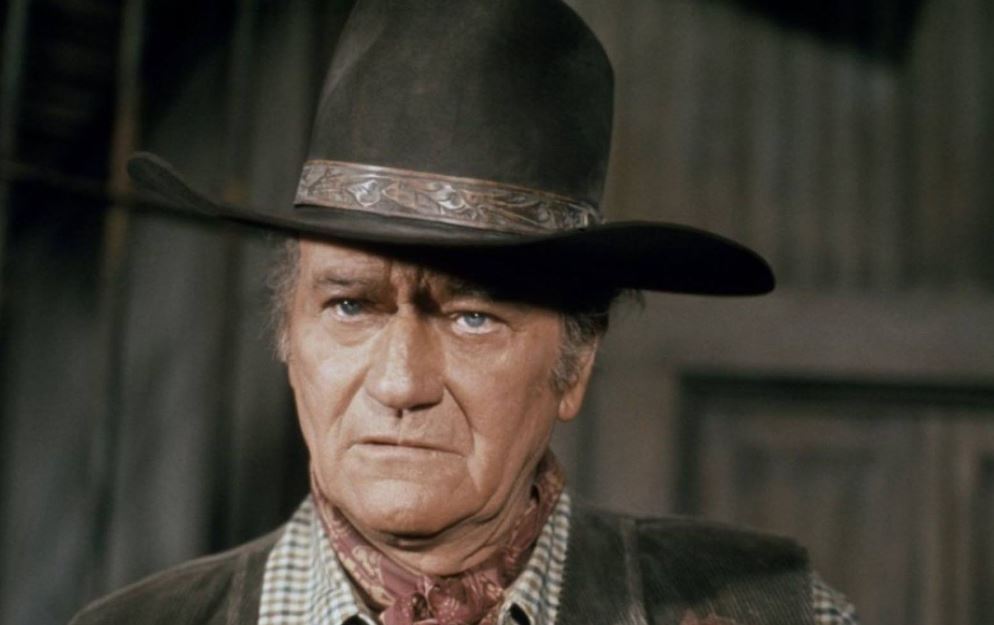The Western genre is one of the most popular in film history, and has been since the early days of silent cinema. However, Western films first began to emerge in earnest towards the middle of the 20th century thanks to the popularity of well-known movie stars who became synonymous with the genre. Gary Cooper, Walter Brennan, Glenn Ford, James Garner, and Alan Ladd all had their fans, but no actors came to dominate the genre quite like John Wayne. Following the breakthrough success of 1939’s Stagecoach, Wayne paved a career path forward in which he nearly exclusively starred in gunslinger movies. Wayne’s popularity grew so immense that his name alone was enough to generate enthusiasm for an upcoming project; however, Wayne’s nickname “The Duke” can be traced to a running joke from his childhood.
Why Is John Wayne Called “The Duke”?
While it was a name that would come to dominate the industry, “Wayne” wasn’t the iconic Western actor’s birth name. He was born Marion Robert Morrison, and didn’t change his stage name to “John Wayne” until director Raoul Walsh and studio head Winfield Sheehans decided his given name was “too Italian” and didn’t fit what they had in mind for leading movie stars. While he wasn’t given a choice in the name that would become iconic to Western movie fans everywhere, Wayne had gone by the nickname “The Duke” since he was a child. Wayne had a modest upbringing living in Iowa, where he learned to play sports and took an interest in acting.

While his impressive athletic skills made him a minor celebrity within his community, Wayne was generally flanked by his family’s Airedale dog, which they named “Duke.” After Wayne’s family moved to Glendale, California in 1916, he would often visit the local fire station accompanied by his loyal family dog. Local firefighters thought it would be funny to refer to Wayne as “Duke,” but he took no offense to being named after a dog. It became a moniker that he grew to accept; the nickname “The Duke” would be one that stuck with him throughout his career of countless Western classics. After he became an established figure within Hollywood history, Wayne often preferred being referred to as “The Duke.”
Wayne would often play grim and brooding figures, with the character of Major Ethan Edwards in The Searchers becoming one of the most infamous anti-heroes in cinematic history. However, Wayne’s nickname of “The Duke” suggested that he had a sense of humor to him. It’s often forgotten that, in addition to his many Western and action roles, Wayne had a serious career as a romantic comedy star. Nonetheless, being named after a dog reflects the humble origins of his career; Wayne’s most memorable characters were typically working-class heroes, law enforcement officials, and lifelong gunslingers, all of which had their roots in reality. It only made sense that the moniker that would come to dominate his career would have that same level of authenticity.
John Wayne’s Path to Stardom Wasn’t Easy
Although he had an extensive career that spanned over half of a century, Wayne’s journey to becoming a prominent Hollywood actor was by no means an easy one. In fact, he had intended to leverage his childhood athletic skills in order to receive a scholarship to play football at the University of Southern California. Unfortunately, a bodysurfing accident derailed these plans, forcing Wayne to take a career in a local movie house in the midst of the Great Depression. His early attempts to break into the film industry were notoriously difficult; he would later cite his experience filming the 1931 romantic comedy Girls Demand Excitement as nearly making him want to quit the industry altogether.

Wayne’s career was hit with another hurdle when his first starring role in the 1930 Western The Big Trail failed to take off with critics and audiences. He subsequently starred in a series of “B” movies throughout the decade that weren’t reflective of his more nuanced acting roles. However, Wayne’s career took off thanks to his partnership with the legendary filmmaker John Ford. Ford first noticed Wayne on a studio backlot for the Fox Corporation and gave him the role of herding geese for his 1928 film Mother Machree. It initiated a lifelong friendship between the two; Ford realized that Wayne’s talents had been judged by the industry at large, and gave him the opportunity to play roles that were befitting of his talents.
John Wayne Became Synonymous With the Western Genre
Wayne’s leading role in Ford’s Stagecoach made him an icon of the genre, as the film was instantly hailed as one of the greatest Westerns of all-time. The signature shot of Wayne’s first appearance in the film is often regarded as one of the greatest introductions in screen history. In the subsequent years, Wayne would make a total of 14 films with Ford. While many of which were in the Western genre, there was a diversity to the types of stories that they told throughout their respective careers. The Searchers may have been regarded as a darker, revisionist take on the genre, but 1948’s 3 Godfathers has been regarded as a Christmas classic.
Beyond his relationship with Ford, Wayne was able to preserve the Western genre’s viability as Hollywood turned its eyes elsewhere. While the quantity of Westerns began to deplete at the tail end of the “Golden Age of Hollywood,” Wayne continued to push the genre forward by starring in more ambitious projects. His role in the acclaimed adaptation of True Grit earned him an Academy Award for Best Actor; Wayne would later cite a critical monologue he has in the film as the single greatest acting moment of his entire career. Fittingly enough, his final screen role ever was in 1976’s The Shootist, an emotional Western that allowed him to reflect on the end of the Western era.
